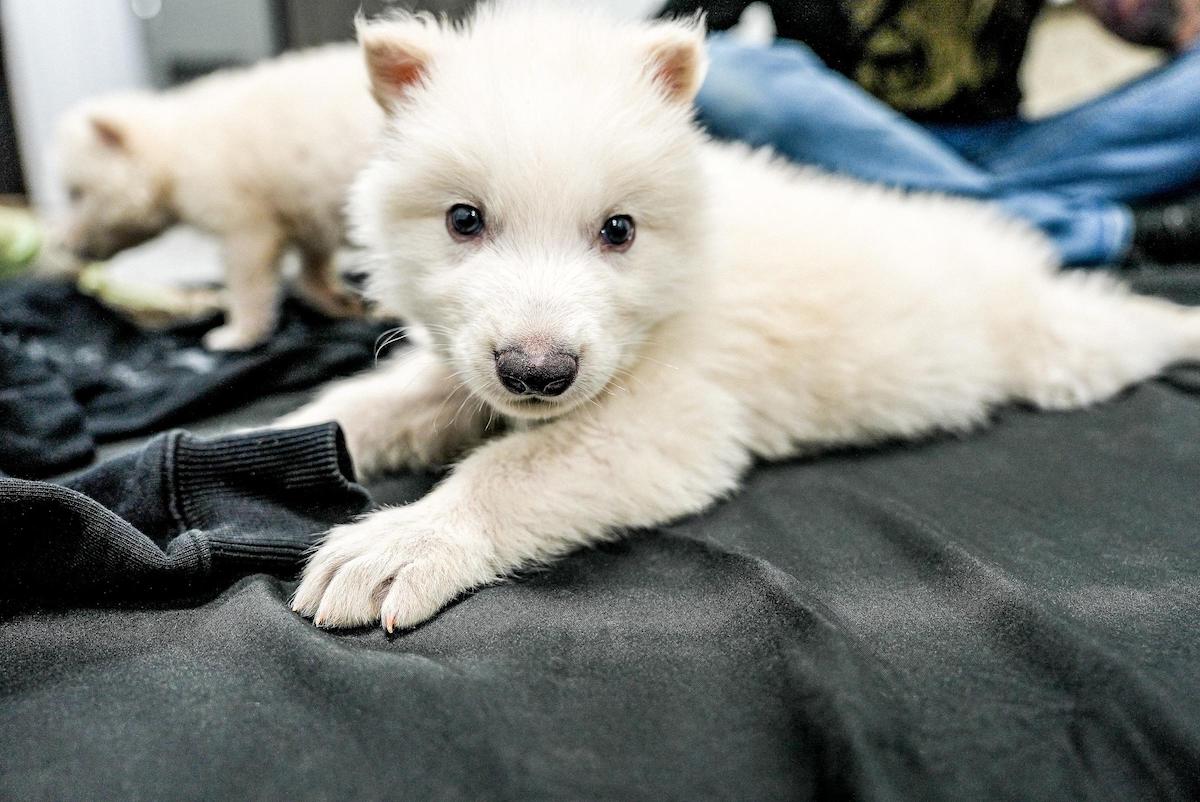Keith Lusher 04.09.25


A Dallas biotech firm claims to have introduced again dire wolves from extinction, however scientists are debating whether or not these animals really characterize “de-extinction” or just genetically modified grey wolves.
Colossal Biosciences, a $10.2 billion firm based by tech entrepreneur Ben Lamm and Harvard geneticist George Church, introduced Monday the delivery of three dire wolf pups named Romulus, Remus, and Khaleesi. The corporate calls them “the world’s first efficiently de-extincted animal.”
What’s a dire wolf?
Dire wolves (Aenocyon dirus) had been apex predators that roamed North America 1000’s of years in the past. In keeping with Colossal, dire wolves had been as much as 25% bigger than grey wolves, with wider heads, thicker fur, and stronger jaws. Their food regimen consisted of no less than 70% meat, primarily from horses and bison.
Whereas many right now know dire wolves from their fictional portrayal in HBO’s “Sport of Thrones,” they had been very actual prehistoric creatures. “Sport of Thrones” creator and Colossal investor George R.R. Martin famous, “Many individuals view dire wolves as legendary creatures that solely exist in a fantasy world, however in actuality, they’ve a wealthy historical past of contributing to the American ecosystem.”


To create these animals, Colossal scientists extracted DNA from two dire wolf fossils – a tooth and an interior ear bone. After sequencing this historic DNA, they recognized key genetic variants that differentiated dire wolves from their closest residing family members, grey wolves.
The corporate then made 20 exact edits throughout 14 genes in grey wolf DNA earlier than cloning the edited cells and implanting embryos in surrogate canine. In keeping with Colossal, these edits targeted on traits like measurement, coat shade, hair texture, and musculature.
“Our workforce took DNA from a 13,000-year-old tooth and a 72,000-year-old cranium and made wholesome dire wolf puppies,” mentioned CEO Ben Lamm within the firm’s announcement.
Scientific Sceptisism
Many scientists, nonetheless, query whether or not these animals really represent “de-extinction.”
“The truth is we are able to’t de-extinct extinct creatures as a result of we are able to’t use cloning — the DNA is simply not nicely sufficient preserved,” mentioned Nic Rawlence from New Zealand’s College of Otago. “What Colossal is attempting to do is genetically engineering animals to appear to be extinct creatures… they’re not a dire wolf.”
Pontus Skoglund from Britain’s Francis Crick Institute was extra blunt, suggesting the pups are “optimistically 1/100,000th dire wolf.”
Love Dalén, a professor in evolutionary genomics and Colossal adviser, acknowledged, “Throughout the genome, that is 99.9% grey wolf,” however added, “It carries dire wolf genes, and these genes make it look extra like a dire wolf than something we’ve seen within the final 13,000 years.”
Colossal’s Chief Science Officer Beth Shapiro defended the strategy: “Our aim with de-extinction is all the time to create practical copies of those extinct species.” She emphasised they had been “specializing in figuring out variants that we knew would result in certainly one of these key traits.”
Past the dire wolf venture, Colossal additionally introduced the delivery of cloned purple wolves, essentially the most critically endangered wolf species on this planet. The corporate suggests their applied sciences may assist protect endangered species by reintroducing genetic variety into declining populations.
The three dire wolf pups at the moment reside on a safe 2,000-acre protect licensed by the American Humane Society and registered with the USDA. The ability options 10-foot-tall fencing and employs full-time animal care workers, with the wolves monitored by way of cameras, safety personnel, and drones.


Colossal hopes to finally “develop the pack” and probably restore the species in safe ecological preserves, presumably on indigenous land.
Michael Knapp, an affiliate professor on the College of Otago, described the achievement as “a serious breakthrough in genetics” whereas noting moral questions stay. “Whether or not or not that is an avenue that ought to be additional pursued is a extremely advanced query,” he mentioned.
As Christopher Preston, a professor of environmental philosophy on the College of Montana, noticed, “I believe you will need to ask what position the brand new animals will serve.”
The scientific debate continues about whether or not these animals characterize true de-extinction or a outstanding feat of genetic engineering that raises profound questions on humanity’s relationship with extinct species.

